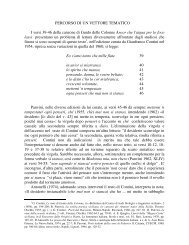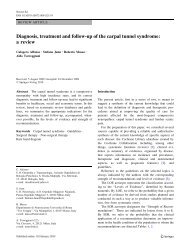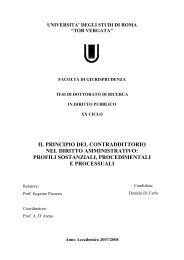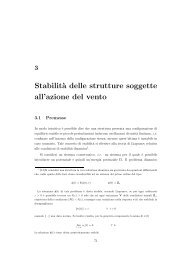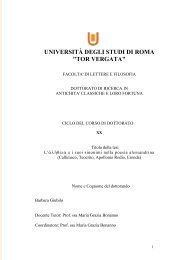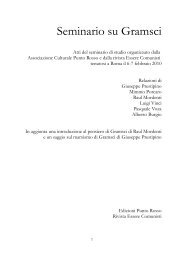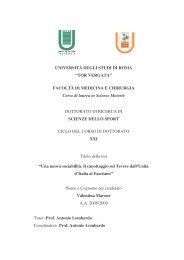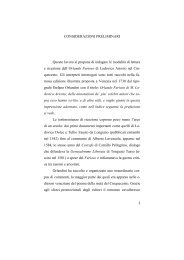Universitā degli studi di Roma “Tor Vergata” - ART - TORVERGATA ...
Universitā degli studi di Roma “Tor Vergata” - ART - TORVERGATA ...
Universitā degli studi di Roma “Tor Vergata” - ART - TORVERGATA ...
Create successful ePaper yourself
Turn your PDF publications into a flip-book with our unique Google optimized e-Paper software.
clay soil-backfill than in chalk and sand one (O’Reill et al.,<br />
1989).<br />
Root intrusion The roots can break the sewer walls as well as open the joints.<br />
Other factors<br />
Sewage characteristics<br />
Inappropriate<br />
maintenance method<br />
Age of sewer<br />
Se<strong>di</strong>ment friction<br />
Wastewater can be corrosive, in particular if it is characterized<br />
by: pH200 mg/L and CO2>0.23<br />
mg/L*carbonate hardness for concrete and asbestos cement<br />
(WSA/FWR,1993). Davies at al. (2001B) estimated that<br />
separated sewer can more likely be damaged than combined<br />
one.<br />
The cleaning by means of pump jetting can erode the inner<br />
sewer wall<br />
It is not the age itself, principally, but the period of<br />
construction accor<strong>di</strong>ng to the historical and technological<br />
development.<br />
An interesting analysis is given by WRc (2001) which is based on a comparison among<br />
the effects of sewer defect size, hydraulic surcharge, groundwater level with water depth and soil<br />
type on ground loss. The worst situation is for a submerged sewer with severe defects, laid in a<br />
sandy fine sand or fine sand subjected to frequent high magnitude hydraulic surcharges; whereas<br />
one of the best picture is a non-submerged sewer with small defects, laid in a me<strong>di</strong>um to high<br />
plasticity clays never subjected to hydraulic surcharges. The location of the experimental areas in<br />
Rome has been done on the basis of this analysis, and the investigated sewer systems (called<br />
Torraccia and Infenetto) were chosen because one was supposed to represent the best situation<br />
(Torraccia) and the worst situation (Infernetto).<br />
Finally, Fenner (2000) identified some informations to be collected for completely<br />
characterizing an urban sewer systems, those information can support the decision for a strategic<br />
rehabilitation planning. They are <strong>di</strong>vided in three groups: physical attributes, data by field visits<br />
and other. In particular:<br />
1. the key physical attributes are: levels cover manhole, pipe sizes, invert levels of<br />
incoming and outgoing pipes and pipe material;<br />
19



